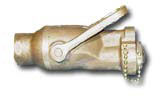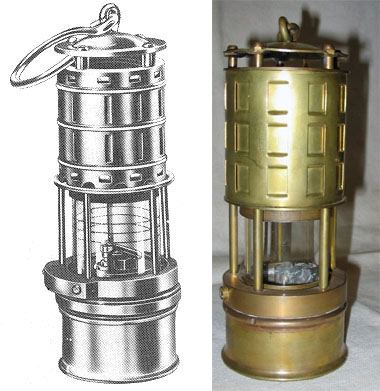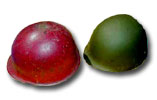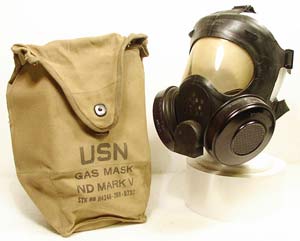|
Developed in 1957, the Navy diaphragm (ND) Mark V gas mask
used a single, plastic, monocular, visor-type eyepiece. It was
the only U.S. gas mask to use this particular monocular lens;
the design was nothing like the earlier Navy diaphragm gas
masks. While this eyepiece offered an excellent field of view,
it was prone to fogging as there was no inner mask installed. An
adjustable five-strap, rubber head harness was used for
suspension, and two C1 filter disc canisters were used for
filtration. The speech diaphragm and exhale valve were clearly
visible on the front of the mask. The carrier bag for the ND
Mark V gas mask had a belt that fit around the waist and
contained a little metal container. This container held the M13
personnel decontamination kit and either the M5 or the M5A1
protective ointment kits, with a cotton cloth and three tubes of
protective ointment.
Inspection of the ND Mark V gas mask was performed by crew
members to whom were issued the mask for training or readiness
operations. Noted defects were reported to the chemical warfare
officer (DCA). Annual inventories were conducted in the chemical
warfare storeroom. At that time, each mask was inspected and
counted, and the inventory report was given to the R-division
leading chief, who verified the report, signed and dated the
inventory, and passed it on to the DCA. Maintenance and repair
kits were issued for each 300 gas masks on the allowance.
Planned maintenance and repairs onboard ship were conducted by
R-division damage control or hull technician personnel. Repair
ships and SIMA also repaired this gas mask.
Replacing the ND Mark IV with the ND Mark V went slowly, but
new construction continued to be outfitted during the 1960s. The
design and impacted arrangement of chemicals in the two
canisters did provide for improved protection; nevertheless,
this feature caused more inhalation resistance, so more effort
was required under normal working conditions to breathe. This
factor caused wearing the mask in extended training exercises to
become tiresome, which was the case in CBR/NBC recovery
operations. |




